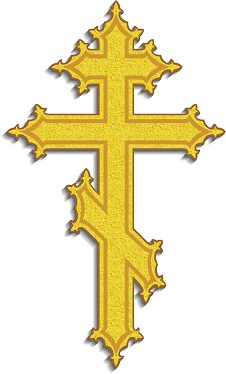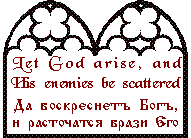
The straightforward, holy simplicity of the Orthodox Christian paradosis continues to attract and retain countless adherents, despite its seemingly unyielding commitment to tradition. For some, the preservation of the one faith once delivered to the Apostles, unchanged over twenty centuries, embodied in the Nicene-Constantinopolitan Creed, the Holy Scriptures and the Holy Traditions of the church, signifies truth, promotes an active faith, and leads to salvation. Yet for still others, the failure of some Orthodox hierarchs to adequately distinguish dogmatic from disciplinary canons causes profound distress. Women who feel called to ordained ministry are usually turned away, and so they turn to denominational churches or other traditions in their quest for a ministerial locus.
Yet, Orthodoxy has a strong tradition of accommodation and adaptation in support of evangelisation, and for the good of the church, without abandoning or betraying the great and holy faith expressed in Liturgy, Creed and Tradition. The early Russian missionaries, under the influence of the Holy Spirit, were quick to discern the needs of the people of Alaska, and so translated liturgical and catechetical materials into the Aleut language. Toward the end of the last century, the Russian and Syrian patriarchates found that they would do well to restore the Western Rite, absent from Orthodoxy since the schism of 1054. Many parishes with Russian and Syrian roots and identities now worship in English, and employ pipe organs for the enhancement of singing during the Liturgy. More recently, priests have been permitted to marry or re-marry after ordination, on a case-by-case basis in North America.
With the recent researches of such scholars as Karen Torjesen, Eva Toppping, and Georgio Otranto, ecclesiastics have been confronted with heretofore unknown or suppressed realities. Consequently, the hierarchs of the Orthodox Catholic Church of America found it necessary to reconsider the long-standing discipline of restricting Holy Orders to men, and determined that the needs of the Church and the spirit of the Gospel require that women be ordained.
Georgio Otranto’s researches indicate clearly that women participated in the priesthood during the First Millennium, the glorious period of the undivided church. Karen Torjesen makes a strong case for the early leadership of women during the very earliest times. There were those who accompanied Jesus on His journeys, of course. And there were a great many women that Paul addresses as co-workers: “[o]f the twenty-eight prominent people whom Paul considered it politic to greet, ten were women.” Indeed, he acclaims Junia of Rome as “foremost among the apostles” (Rom 16:7), and as late as the fourth century, John Chrysostom mentions her in sermons as Junia the apostle. (33)
Eva Topping provides numerous examples of significance, beginning with Phoebe, Christianity’s first woman deacon, who served the church at Cenchrae. In the early days, the women deacons wore the orarion and communed at the altar with the priests. The Council of Nicaea in 325 classed deaconesses among the clerical ranks, and in the fourth century Apostolic Constitutions the bishop is charged to ordain deaconesses at the same place in the liturgy as that of priest. St. John Chrysostom’s confidante was the celebrated deaconess, Saint Olympias. (118-119)
During that same splendid fourth century, we have the record of St. Nikodemos Hagioreites, who tells us the details of Susanna the saint, the deacon and martyr, archimandrite of a monastery in Jerusalem. It happened like this. She was born in Palestine, the child of a Jewish mother and a Greek father. After her parents died, she gave away her inheritance to the poor, freed her slaves, cut her hair, put on men’s clothing, and entered a monastery. Tonsured a monk with the name John, she advanced to the rank of archimandrite. Only two virgins and two women deacons knew of her past. When in the course of time the bishop of Eleutheropolis came to discover the truth, some twenty years had passed, and he was astounded. But rather than punish her, he ordained her to the diaconate. She left the monastery and returned with the bishop to the diocesan see in Eleutheropolis. )138-139) Susanna was not the only woman-monk. St. Euphrosyne of Egypt, called herself Smaragdos, and lived for thirty eight years in unsurpassed austerity and virtue. Theodora of Alexandria, who may have been the Amma Theodora quoted in the Apophthegmata Patrum, was a married woman who left home and entered a male monastery, there to remain until death. (77)
More than these, we have the witness of those saints identified as apostles or equal-to-the-apostles. Mary Magdalene was the first to proclaim the resurrection, and she is recognised by tradition as the first apostle and the first evangelist. According to some records, she was accompanied by the holy myrrh-bearers, Mary of Kleopas, Mary the mother of James and Joseph, Martha and Mary of Bethany, Joanna, Salome, and Zebedee’s wife, the mother of James and John. Fotini, the woman at the well, brought the gospel to the Samaritans, and is commemorated in hymns as a “spring of living water,” and as a “God-bearer.” Fotini was baptised at the first Pentecost, and with her younger son Joseph brought the gospel to North Africa. After a vision in which Jesus appeared to her, she sailed for Rome, confronted Nero, tried to convert him, and was martyred. (57) There are many others like her. There was Prisca, who was a co-worker with Aquila, and a disciple of Paul; and there was Mariamna, the sister of St. Philip the apostle, and Thekla, the first woman martyr, called “equal-to-the-apostles” by the early church. It is said that when an illiterate woman received a Bible as a gift, St. Thekla miraculously granted her the power to read. (76)
Whatever the particulars of historical data may indicate, and whatever force those particulars may have in cracking open the door on behalf of women’s ordination, there is yet another theological approach based on something well understood in Orthodoxy. Archbishop +Brian (Carsten) points out that in all this we endeavor prayerfully to discern and recognize the dynamic, life-giving power and inspiration of the Holy Spirit, Who remains eternally with the Church, and Who acts in all times and by all means to guide and direct the children of God. Jesus promised, “I will send him to you. When he comes, he will confute the world, and show where wrong and right and judgement lie.” (Jn 16: 7b-8) Few Christian households would have thought slavery anything unusual (and indeed, Paul does tell slaves to obey their masters!) or against the will of God. It was the Holy Spirit, moving as much in the secular world as in the ecclesiastical, that has moved us to understand something very different than our history and tradition would have us understand. The Spirit breathes where the Spirit will. (Jn 3:8) And it usually takes us believers a while to catch such a Breath!
Suffice it to say, then, that the hierarchs of the Orthodox Catholic Church of America reviewed the current literature and research, and consulted prayerfully among themselves and with the clergy of the Archdiocese on this momentous matter. It is in no way a small thing to depart from a tradition held for so long, and such a decision must be made with the full understanding that is must deepen the unfortunate division between this jurisdiction and the rest of Orthodox Christianity. Yet the needs of people struggling for Christian identity, struggling with Orthodox Christianity in a post-Christian secular world must take precedence over disciplinary canons, over politics, and over intercommunion, without damaging or detracting from the deposit of the faith. The hierarchs recognise with deep sadness that while diversity and decentralization is a great blessing, the corresponding burden of world Orthodoxy is fragmentation, division, and dissension. The OCCA is not the only Orthodox-identified jurisdiction open to the ordination of women; more and more small autocephalous faith communities, with their hierarchs, are considering their mission and direction, and have developed agreed statements in this matter. And of course, it is the fervent hope of many that from these small beginnings will emerge a paradigm shift among Orthodox Christians worldwide. If women participated in the priesthood for the first millennium of Christianity, then the restoration of the priesthood to women on this the eve of the third millennium is more than overdue. The OCCA hopes that these beginnings will serve as a beacon – a prophetic witness in the world to the eternal truth and unity of the Orthodox faith. At the same time, it is hoped that by demonstrating the ability of Orthodoxy to continue to accommodate to cultural changes, we will more effectively reach those who hunger and thirst for this historic expression of faith.

The Orthodox Catholic Church of America was established in 1892 by the Syrian Orthodox patriarchate of Antioch as the Archdiocese of America, and has been an autocephalous (self-governing) jurisdiction since 1910. A small number of self-governing Orthodox churches have been established in the United States in this century, and the OCCA is among the oldest, if not the oldest, of these jurisdictions. There is currently no canonical relationship or intercommunion between the OCCA and any of the Eastern Patriarchs. The present Metropolitan, Archbishop +E. Paul Brian (Carsten), resides in Indiana. The clergy are non-stipendiary, and although most clergy and parishes are in the Midwest, there are small base-communities, research centres, and house churches in the Northeast and Mid-Atlantic. The OCCA has no traditional ethnic affiliation, and no common secular cultural identity unifies the members. Almost all the clergy and church members are converts; and while most are Western Rite, there are some with Eastern and bi-ritual background and training. More information about the OCCA’s ministry and ecclesiology can be obtained at orthodoxcatholicchurch.org, the jurisdiction’s web site.
Bibliography
Fiorenza, Elisabeth Schüssler. In Memory of Her: A Feminist Reconstruction of Christian Origins. New York: Crossroad, 1983.
Topping, Eva Catafygiotu. Holy Mothers of Orthodoxy. Minneapolis: Light and Life Publishing Company, 1987.
Torjesen, Karen Jo. When Women Were Priests. San Francisco: HarperSanFrancisco, 1995.
Padovano, Anthony T. Power, Sex, and Church Structures. Mequon, Wisconsin: Corpus Reports, 1994.
© 1999 Lynn E. Walker


Further information
St. John of Kronstadt Centre Main Page
New Paradigms for Ministry in the Third Millennium
The Paradosis Missal
Women's Ordination
Orthodox Views on Women's Ordination
Pastoral and Parish Work
Other Links